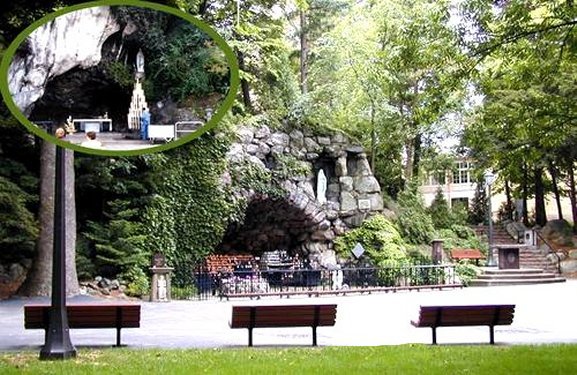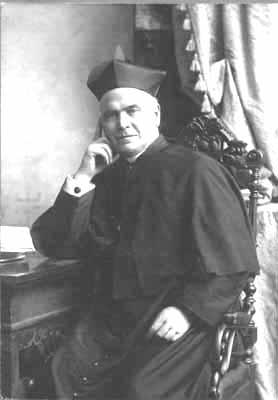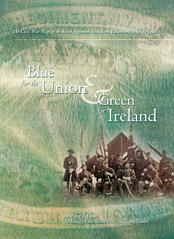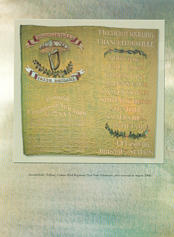
A Cave of Candles / by Dorothy V. Corson


The information contained in these small booklets fueled my research on the Grotto from the start of my search to its final conclusion more then ten years later. My first-person journal of research went online on the Internet on Lourdes Day, February 11, 2000 under the title, A Cave of Candles: The Story Behind the Notre Dame Grotto, along with a third-person, chronological, condensed version entitled, Notre Dame’s Grotto. Subsequent refinements and additional Web pages were added in the next two years. Robert Ringel’s Notre Dame Photo Gallery -- a feast for the eyes -- was compiled and placed online in 2001. My mission for Our Lady and the Grotto nearly accomplished, I began to think about moving on to other creative pursuits.
At least, that was my plan, until another piece of unexpected research landed in my lap. I had underestimated the power of the Lady in Blue; she was not finished with me yet. She had saved the best for last, one more very important missing piece to add to my Grotto research. The solution to a tantalizing mystery associated with the Grotto that I had given up finding many years before, after more than one fruitless search.
It all began with this excerpt from the text of one of the Annals articles about the building of Notre Dame’s Grotto. The unknown story behind the events described below has piqued my curiosity from the moment I first read the article, as it has for many others from Hesburgh on down, who have read my A Cave of Candles manuscript:

In the midst of writing the text for one of these stories a newly published book entitled, Blue for the Union & Green for Ireland crossed my path at an opportune moment. This new book was written by Peter Lysy, the same University Archivist who encouraged my own fledgling research efforts which ultimately led me down this trail of Notre Dame memories.
Somehow, in my weekly research visits to the University Archives, I had missed hearing about this new book, based on the restoration of an Irish Brigade flag and the significant role it played during the bloodiest battles of the Civil War. The flag was given to Notre Dame in 1896, and over the years fell into disrepair. It was badly in need of restoration. An Irish donor, the Paul and Kay Gibbons family, '63 and SMC '62, provided the funds to restore the flag and publish a record of the role it played in the Civil War.
Notre Dame’s Fr. Wm. Corby -- the originator of Notre Dame’s Grotto -- who was also chaplain of an Irish Brigade regiment during the Civil War is profiled in the book. So, of course, I had to read it from cover to cover. The history of the Civil War was not only absorbing, it was an education. The belated arrival of the Irish Brigade Flag on campus in February of 1896 was detailed in the last few pages of the book. It was the timing of the flag’s arrival on campus that caught my attention. It coincided with Fr. Corby’s return from his trip to Lourdes and his mention of receiving a cable informing him his request made at the Lourdes Grotto in France had been granted.
 In the book, Blue for the Union & Green for
Ireland, I learned that after the Civil War a suggestion was made that the Irish flags be preserved at Notre Dame. When the government heard about it, all Civil War flags were ordered sent to Washington, D.C. Upon their arrival, they were stored unwisely and deteriorated over the years. Fortunately, one flag was not sent to Washington. Col. James D. Brady, the last commander of the 63rd, as was the custom as an officer, kept the Second Irish (Tiffany) Colors for himself. It was his flag that he donated to the University in 1896, although it had taken more than thirty years for it to arrive on campus. Its arrival also coincided with the publication of Fr. Corby’s Memoirs of a Army Chaplain the year before and a belated Gettysburg Medal awarded to Fr. Corby near the same time.
In the book, Blue for the Union & Green for
Ireland, I learned that after the Civil War a suggestion was made that the Irish flags be preserved at Notre Dame. When the government heard about it, all Civil War flags were ordered sent to Washington, D.C. Upon their arrival, they were stored unwisely and deteriorated over the years. Fortunately, one flag was not sent to Washington. Col. James D. Brady, the last commander of the 63rd, as was the custom as an officer, kept the Second Irish (Tiffany) Colors for himself. It was his flag that he donated to the University in 1896, although it had taken more than thirty years for it to arrive on campus. Its arrival also coincided with the publication of Fr. Corby’s Memoirs of a Army Chaplain the year before and a belated Gettysburg Medal awarded to Fr. Corby near the same time.
In reading about it, the thought occurred to me that thirty years was a long time to wait for these items which Fr. Corby, Irish himself, must have hoped would enrich Notre Dame’s history and bring added prestige to the University and its Irish community of priests, Brothers and Sisters.
Could this have been the favor requested of Our Lady at Lourdes, France during his business trip to Rome?
I ran my idea by two University Archivists but both shook their heads and expressed the same opinion. “No way, something like that wouldn’t have been important enough to warrant a special trip to Lourdes.” Nonetheless, my mind grabbed hold of the idea like a bull dog and wouldn’t let it go. I knew I would have to satisfy myself before I could move on. Then at least I would know that no stone had been left unturned in pursuing this latest clue to the mystery. All of which meant another trip to the Indiana Province Archives Center to look through Fr. Corby’s correspondence yet another time.
 Earnest letters in his file regarding medals he had been nominated for, The Medal of Honor, in addition to the Gettysburg Medal, as well as letters regarding the receipt of the flag in February, 1896, convinced me of Fr. Corby’s longing to receive these items on behalf of the University after such a long wait. Pouring over them the thought came to mind that if I had been Corby at Lourdes, whatever that more important favor might have been, an added prayer for the arrival of the Flag and the medals, to me, would not have seemed an unlikely request on his part.
Earnest letters in his file regarding medals he had been nominated for, The Medal of Honor, in addition to the Gettysburg Medal, as well as letters regarding the receipt of the flag in February, 1896, convinced me of Fr. Corby’s longing to receive these items on behalf of the University after such a long wait. Pouring over them the thought came to mind that if I had been Corby at Lourdes, whatever that more important favor might have been, an added prayer for the arrival of the Flag and the medals, to me, would not have seemed an unlikely request on his part.
The Indiana Province Archives on campus closes at noon. I had already gone through two boxes of Corby’s correspondence. With just five minutes left and only a couple folders remaining in the last box, I decided to be thorough and finish them. In doing so, in that last five minutes before closing, I found two letters in Fr. Corby’s correspondence that did not belong there. They were not to him or from him. My archival antenna went up. The letters were filled with strong emotions and fervent pleas. And they were dated during late March and April of 1895, the months preceding the first of May 1895, when Corby spoke of receiving the cable granting his favor.
Eureka! I knew, instinctively, that I was on to something of history-making significance that might never have been explored in depth before. I had finally found the key to unlock the door to this long unsolved mystery but I also knew I had a long road ahead of me to prove it beyond a doubt.